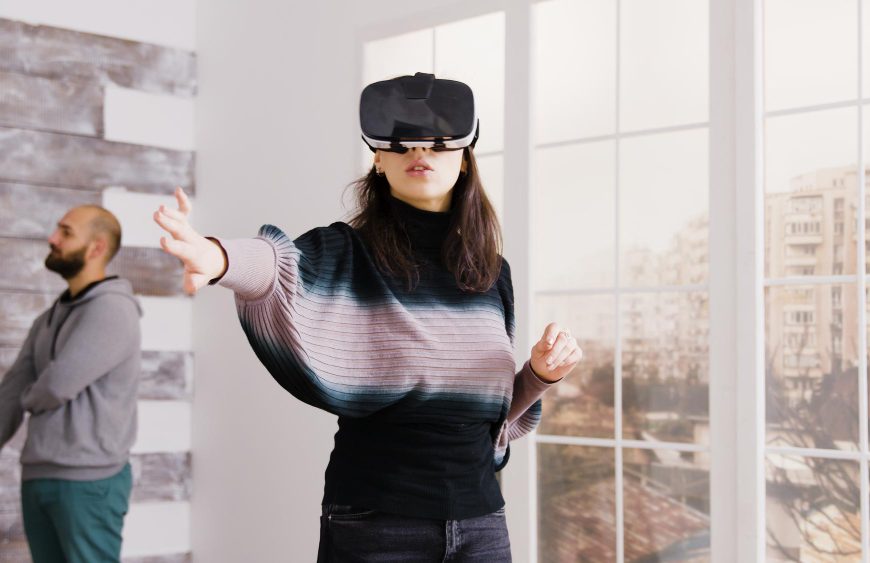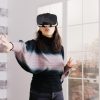Exploring the Transformation of Daily Life Through Virtual and Augmented Reality
Virtual Reality (VR) and Augmented Reality (AR) were once positioned as futuristic technologies, often associated with science fiction or niche gaming experiences. Today, however, they are rapidly becoming practical tools that reshape how we learn, work, and interact with the world. By blending the digital and physical realms, VR and AR offer capabilities that extend far beyond entertainment, delivering real-world benefits across healthcare, education, retail, entertainment, and professional training.
What makes VR and AR especially powerful is their ability to create immersive, interactive experiences that traditional tools cannot replicate. A flat diagram in a textbook can illustrate the human heart, but a VR simulation of a beating heart that a medical student can “walk around,” manipulate, and study in detail provides a level of engagement that significantly enhances understanding. Similarly, AR applications that overlay digital instructions onto physical machinery allow technicians to make faster, more accurate repairs while reducing errors. These examples suggest that VR and AR are not just novelties; they represent meaningful extensions of human capability.
Healthcare: From Training to Patient Care
Healthcare is one of the fields experiencing a profound impact from immersive technologies. Virtual Reality has emerged as a valuable tool for medical training, enabling students to practice surgeries in entirely simulated environments. These experiences create a safe, repeatable, and controlled setting where learners can make mistakes without risk to real patients. Furthermore, VR is helping patients themselves by offering pain management techniques through immersive experiences that distract them during procedures or rehabilitation.
Augmented Reality, on the other hand, is being used by surgeons for real-time assistance during complex operations. With AR headsets, doctors can visualize 3D models of organs or overlay scan data directly onto the patient’s body. This enhances precision, reduces operating time, and improves outcomes. Such uses demonstrate how immersive tools are not just supporting healthcare education—they are directly improving quality of care.
Education: Enhancing Learning and Engagement
Traditional classrooms are being reimagined with VR and AR as powerful teaching aids. Virtual tours of historical landmarks, interactive physics simulations, and immersive storytelling experiences make abstract concepts more tangible. For example, students can “stand” inside ancient Roman ruins or “zoom” into the molecular structure of an atom. Instead of passively reading or watching, they actively engage with subjects.
AR also contributes to everyday learning by providing context-rich overlays on textbooks or physical environments. Pointing a phone at a diagram can bring up animations, explanations, or additional resources, turning passive reading into interactive exploration. By making education more experiential, VR and AR are improving retention, engagement, and accessibility for students of all ages.
Entertainment: Immersion as the New Standard
While gaming continues to be the dominant entry point for many consumers, VR and AR are expanding the boundaries of entertainment at large. Virtual concerts allow global audiences to attend live events without physical travel. AR filters and interactive storytelling on mobile platforms have mainstreamed the idea of blending digital content with the physical world, creating playful, personalized experiences that can be shared instantly on social platforms.
Even in cinema and live theatre, directors are experimenting with VR to place audiences inside stories instead of watching them from a distance. Entertainment is no longer limited to passive consumption; instead, immersive technologies allow audiences to step into dynamic, narrative-driven experiences where they can shape outcomes and perspectives.
Retail: Redefining Shopping and Customer Engagement
The retail industry is increasingly adopting AR to revolutionize how consumers discover and purchase products. One of the most popular applications is AR “try-before-you-buy” tools, allowing customers to see how furniture fits in their living room or how a pair of glasses looks on their face—all in real time. This reduces return rates, improves customer satisfaction, and creates a smoother buying process.
VR is also being used by forward-thinking companies to create fully virtual stores where customers can browse collections, interact with products, and engage with branded experiences without stepping into a physical location. At the same time, AR is enhancing in-store shopping by providing real-time product information, reviews, and interactive displays when customers use mobile apps to scan items.
Professional Training: Safe, Cost-Effective, and Scalable
One of the most practical applications of VR and AR today lies in workforce training. Industries such as aviation, manufacturing, logistics, and energy require highly skilled workers who must be trained to handle complex tasks under potentially hazardous conditions. VR simulations allow trainees to practice scenarios—from piloting aircraft to operating heavy machinery—in a safe and controlled digital environment.
Meanwhile, AR is being used on the job to provide real-time guidance. For instance, an engineer repairing equipment can wear AR glasses that display step-by-step instructions, technical schematics, or expert guidance streamed live from a remote supervisor. This minimizes errors, reduces downtime, and accelerates skill development. The combination of immersive training and on-the-job AR support is proving transformative in preparing and supporting today’s workforce.
From Experimental Concepts to Real-World Integration
What was once experimental is now mainstream. VR and AR are no longer restricted to specialized labs or entertainment studios—they are actively shaping how industries function. The integration of these technologies into daily professional life is accelerating for several reasons: declining hardware costs, greater availability of software tools, and the demand for digital solutions that keep pace with remote work and global collaboration.
Communication and collaboration are being enhanced by VR meeting platforms that allow colleagues, spread across continents, to gather in a shared immersive environment where body language, presence, and spatial awareness add depth to interactions. Architects and designers are leveraging VR to walk clients through digital prototypes before construction begins, enabling more informed decision-making and fewer costly revisions. Marketers are experimenting with AR-based campaigns that create direct, interactive engagement with customers through smartphones and wearables.
These examples illustrate that VR and AR are not gimmicks but essential extensions of digital infrastructure. They are becoming indispensable in a world where efficiency, accuracy, and immersive engagement are valued just as highly as speed and convenience.
Conclusion: Immersive Technologies as Everyday Tools
Virtual and Augmented Reality are no longer distant promises of science fiction. They are here, today, delivering practical benefits across critical sectors. In healthcare, they are saving lives; in education, they are transforming learning; in entertainment, they are redefining storytelling; in retail, they are reshaping customer journeys; and in professional training, they are preparing the workforce of tomorrow with unmatched effectiveness.
As these technologies continue to advance and adoption becomes more widespread, VR and AR will shift from being considered “innovations” to becoming standard tools—just like smartphones or video conferencing are today. By merging the digital and physical worlds, they are not simply adding a layer of novelty to our experiences; they are enhancing human capability in ways that traditional methods cannot match.
The future will not be about choosing between physical and digital realities—it will be about weaving them together into seamless, enriched experiences that empower people in everyday life. And that future has already begun.







